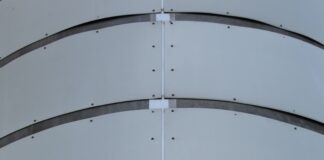Hanfu is a traditional Chinese clothing style that holds deep cultural significance and has a rich history spanning thousands of years. The term “Hanfu” itself literally translates to “Han clothing,” referring to the ethnic Han Chinese people who form the majority in China. Wearing Hanfu represents not just a fashion statement but a connection to the country’s ancient past, reflecting the values, aesthetics, and social structure of different dynasties throughout history. Today, the Hanfu movement has gained momentum, with enthusiasts seeking to revive and preserve this traditional attire as an essential part of Chinese heritage.
Here are ten important things you need to know about Hanfu:
1. Ancient Origins: Hanfu’s origins can be traced back to the early periods of Chinese history, with styles evolving over time through various dynasties. The earliest records of Hanfu date back to the Shang Dynasty (c. 1600–1046 BCE) and continued to flourish through the Tang (618-907 CE) and Ming (1368-1644 CE) Dynasties.
2. Traditional Designs: Hanfu encompasses a wide variety of designs, each characterized by its specific cut, shape, and ornamentation. Key elements include robes, skirts, blouses, and other accessories, all designed to reflect the cultural, social, and hierarchical distinctions of different historical eras.
3. Silhouette and Layers: Hanfu is renowned for its flowing lines, loose fit, and layered aesthetics. Typically, it involves multiple layers of clothing, including an inner garment, an outer robe or tunic, and various accessories such as belts, sashes, and scarves.
4. Symbolism and Color: Colors play a significant role in Hanfu, with each shade representing different attributes and occasions. For instance, yellow symbolizes the emperor, red conveys joy and celebration, and blue represents immortality. The use of auspicious symbols and patterns further adds to the clothing’s symbolism.
5. Occasions and Ceremonies: Hanfu was once widely worn in various social and ceremonial contexts, such as weddings, coming-of-age ceremonies, festivals, and official events. Each occasion had its specific style and rules governing the type of Hanfu to be worn.
6. Revival and Modern Adaptations: In recent years, the Hanfu movement has gained traction among Chinese youth and cultural enthusiasts. This revival has led to modern adaptations of Hanfu that blend traditional designs with contemporary elements, making it more accessible and wearable in everyday life.
7. Cultural Identity and Heritage: For many proponents of Hanfu, wearing this attire is a way of embracing their cultural identity and preserving their heritage. It fosters a sense of pride in China’s ancient history and serves as a means to reconnect with the country’s roots.
8. Challenges and Controversies: Despite its resurgence, the Hanfu movement has faced challenges and controversies. Some critics view it as promoting Han ethnic nationalism or cultural chauvinism, while others question historical accuracy or accuse it of cultural appropriation.
9. Influence on East Asian Fashion: Hanfu’s influence extends beyond China’s borders, with neighboring countries like Japan and Korea adopting similar styles in their historical clothing. This shared cultural heritage underscores the interconnectedness of East Asian cultures.
10. Hanfu Festivals and Communities: To celebrate Hanfu culture and connect with like-minded individuals, various Hanfu festivals and gatherings have emerged in China and around the world. These events provide opportunities for enthusiasts to showcase their Hanfu, participate in cultural activities, and engage in meaningful discussions about its significance.
Hanfu is a significant aspect of Chinese cultural heritage, representing not just a style of clothing but an intricate link to the country’s historical past. Its revival in contemporary times reflects a growing interest in preserving and appreciating the rich traditions that have shaped Chinese civilization over millennia. Whether through formal ceremonies, everyday wear, or cultural festivals, Hanfu continues to weave its unique tapestry in the modern world, uniting people with a shared passion for their heritage and traditional aesthetics.
Hanfu stands out as a distinctive traditional clothing style with several unique characteristics that set it apart from other types of attire. Here are some of the key features that make Hanfu different:
Historical Authenticity: Hanfu is deeply rooted in China’s ancient history and is directly connected to various dynasties and historical periods. Unlike modern fashion trends, which change rapidly, Hanfu remains firmly grounded in its historical origins, reflecting the aesthetics and values of ancient China.
Cultural Symbolism: Each element of Hanfu, including the color, pattern, and fabric, carries cultural symbolism and meaning. From representing social status and identity to embodying wishes for prosperity and happiness, Hanfu’s symbolic significance goes beyond mere fashion.
Layered Design: The layering of Hanfu sets it apart from many other clothing styles. It typically involves multiple layers of garments, such as an inner garment, an outer robe, and additional accessories, which create a graceful and flowing silhouette.
Loose and Flowing Fit: Hanfu’s loose and flowing fit contrasts with the tight and structured designs often found in modern fashion. This loose silhouette is not only comfortable to wear but also accentuates the elegance and grace associated with traditional Chinese aesthetics.
Aesthetic Harmony: Hanfu embodies the concept of “harmony” (å’Œè° héxié) often found in traditional Chinese culture. Its colors, patterns, and designs are chosen to achieve a balanced and harmonious look, in line with the principles of Yin and Yang.
Gender-Neutral Elements: Hanfu’s design elements, such as the cross-collar and robe-like shape, were historically worn by both men and women. While there are variations in styles for each gender, the overall principles of Hanfu design were not strictly gender-specific.
Regional Diversity: Throughout history, different regions in China developed their own variations of Hanfu, influenced by local customs and climates. This regional diversity adds depth and richness to the overall Hanfu tradition.
Emphasis on Handcrafting: Traditional Hanfu is often made using intricate handcrafting techniques, including embroidery, weaving, and dyeing. These techniques showcase the craftsmanship and skill of artisans, emphasizing the value of traditional artistry.
Historical Rituals and Occasions: Hanfu was traditionally worn during specific rituals, ceremonies, and festivals, each with its own set of rules and etiquette. The importance of wearing the appropriate Hanfu for particular occasions underscores its significance in traditional Chinese society.
Revival Movement: Hanfu’s modern revival differentiates it from other historical clothing styles that may have faded away over time. The contemporary Hanfu movement showcases a renewed interest in preserving and reviving this aspect of China’s cultural heritage.
Hanfu’s uniqueness lies in its historical authenticity, cultural symbolism, layered design, and emphasis on harmony. Its revival movement reflects a passionate commitment to preserving traditional aesthetics and values, making Hanfu a remarkable and treasured part of Chinese heritage.
In conclusion, Hanfu’s revival represents a powerful cultural movement driven by passion, history, and a desire to connect with China’s rich past. The dedication of its enthusiasts, both in China and beyond, has breathed new life into this traditional attire, making it a symbol of cultural pride and heritage in the 21st century. As the Hanfu movement continues to evolve, it remains a testament to the enduring appeal of tradition and the importance of preserving cultural identity in an ever-changing world.














